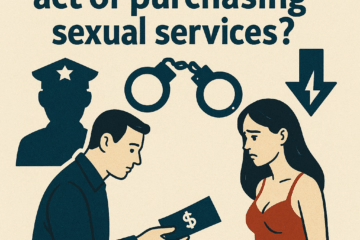The Offence and Potential Penalties
Theft is defined in section 322 of the Criminal Code. The punishment for theft where the value of the property stolen is not more than $5,000 is outlined in section 334(b):
334 Except where otherwise provided by law, every one who commits theft […] (b) if the value of what is stolen is not more than $5,000, is guilty (i) of an indictable offence and is liable to imprisonment for a term not exceeding two years, or (ii) of an offence punishable on summary conviction.
This means theft under $5,000 is a “hybrid” offence. The Crown prosecutor chooses whether to proceed by indictment or summary conviction.
If prosecuted by indictment, the maximum penalty is imprisonment for two years.
If prosecuted by summary conviction, the general penalty under section 787(1) of the Criminal Code applies, which is a fine of not more than $5,000 or imprisonment for not more than two years less a day, or both.
Sentencing Principles for a First-Time Offender
Canadian courts must apply the sentencing principles outlined in the Criminal Code, particularly sections 718 to 718.2. Key principles include proportionality (s. 718.1) and considering aggravating and mitigating circumstances (s. 718.2(a)). Being a first-time offender is generally a significant mitigating factor.
Furthermore, section 718.2(d) and (e) emphasize restraint:
718.2 A court that imposes a sentence shall also take into consideration the following principles: […] (d) an offender should not be deprived of liberty, if less restrictive sanctions may be appropriate in the circumstances; and (e) all available sanctions, other than imprisonment, that are reasonable in the circumstances and consistent with the harm done to victims or to the community should be considered for all offenders…
Possible Sentencing Outcomes
For a first-time offender convicted of a minor theft under $5,000, courts will typically consider less severe options before imprisonment. The potential outcomes range significantly:
- Alternative Measures (Diversion): While not technically a sentence after conviction, section 717 of the Criminal Code allows for diversion programs before a conviction. If the offender accepts responsibility and completes assigned conditions (like community service, an apology, or restitution), the Crown may withdraw the charges, resulting in no criminal record. This is a common approach for minor, first-time offences.
- Discharge (Absolute or Conditional): Under section 730 of the Criminal Code, if the offence doesn’t have a minimum punishment and isn’t punishable by 14 years or life imprisonment (which theft under $5000 is not), the court can grant a discharge if it’s in the accused’s best interest and not contrary to the public interest.
An absolute discharge means the offender is found guilty but not convicted, and no penalty is imposed.
A conditional discharge means the offender is found guilty but not convicted, provided they follow specific probation conditions for a set period. If successful, the discharge becomes absolute. Discharges are frequently considered for first-time offenders in minor theft cases. As noted in R v Roul (2015), NLPC, citing R. v. Glasco:
“Sentences for thefts of this nature vary and can range from a discharge in the case of a first offender…”
Similarly, R v Lacey (2016), NLPC mentioned that the range for theft under $5000
spans from an absolute discharge
upwards.
- Fine: Section 734 of the Criminal Code allows the court to impose a fine, either instead of or in addition to other penalties, provided the offender can pay. If proceeding summarily, the maximum fine is $5,000 (s. 787(1)).
- Suspended Sentence and Probation: The court convicts the offender but suspends the passing of a sentence, placing the offender on probation for a specified period (up to three years). If the offender breaches probation, they can be brought back to court to be sentenced for the original theft.
- Conditional Sentence Order (CSO): Under section 742.1 of the Criminal Code, if the sentence imposed is less than two years and certain criteria are met (including that the sentence served in the community would not endanger public safety), the court may order the sentence to be served in the community under strict conditions (often referred to as house arrest).
- Imprisonment: While less common for a truly minor, first-time theft under $5,000 with no aggravating factors, imprisonment up to the maximums (2 years less a day summarily, 2 years indictably) is legally possible. Jail time becomes more likely if there are aggravating factors, such as a breach of trust, a significant value stolen (though still under $5,000), or if the theft was part of a larger pattern or accompanied by other offences (as seen in cases like R v Lockyer (2016), NLPC and R. v. Pardy (2016), NLSC, though these involved more serious accompanying charges).
Youth Offenders
If the first-time offender is a youth (under 18 years old), the Youth Criminal Justice Act applies, which has different principles and a distinct range of sentencing options focused on rehabilitation and accountability through non-custodial measures where appropriate (see YCJA section 42).
Conclusion
The sentence for a first-time offender convicted of theft under $5,000 depends heavily on the specific facts of the case, the value stolen, the circumstances surrounding the offence, and the personal circumstances of the offender. However, given the sentencing principles favouring restraint and rehabilitation for first offenders, outcomes like diversion, discharges, fines, or probation are more common than imprisonment for simple, minor thefts.
Please note that my analysis is based on the legal information I have access to. There may be other relevant case law or legislative provisions I haven’t identified. This information is for educational purposes and should not be considered legal advice.



0 Comments